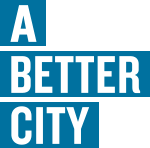The Transportation Dividend: Transit Investments and the Massachusetts Economy
February 12, 2018
As home to America’s first subway, Boston has been a transit-oriented city for more than a century. In fact, much of our regional economic success is due to the connectivity that a transit system provides. It is no coincidence that the area served by the MBTA houses almost 70 percent of the state’s population, offers 74 percent of the jobs, and generates 84 percent of Massachusetts’s gross domestic product. The MBTA is the backbone of our economy and any successful strategy for continued growth and prosperity for the region must begin with smart investment in this system.
Luckily, the calculus is straightforward as the benefits from our transit system far outweigh the costs we dedicate to support it. A new report from A Better City, made possible through support from both the Barr Foundation and The Boston Foundation, measured the MBTA’s performance and economic impact. It found that through travel time and cost savings, vehicular crashes avoided and reduced auto emissions, the MBTA provides an estimated $11.4 billion in value to Greater Boston each year for both transit users and non-users alike. Boston residents experience all of these benefits from the T’s annual operating budget of approximately $2 billion.
The report also considered the alternative, examining what would it cost if our transit system did not exist. Our economy would require the capital cost of nearly 2,300 additional lane miles of roads and 400,000 more parking spaces. If we needed to build that today, the cost for this vehicular infrastructure would be over $15 billion. The MBTA is a bargain today and for the future.

At more than five times the return on investment, the choice to finance the maintenance, improvement and expansion of MBTA operations within the 164 communities of metro Boston is clearly worth it. Unfortunately, the current MBTA budget plans are insufficient to meet all current and projected needs. The region is expected to continue growing through 2040 in terms of population, jobs and housing units. The anticipated growth over this time cannot be comfortably accommodated without strategic and prolonged investments in transit; the MBTA needs additional resources to meet this growing demand.
Growth Potential Disproportionately Concentrated Near Transit, for Good Reason
The region’s growth trajectory is not a fait accompli. It will depend on the efficient movement of people and goods, affordable housing and available office space. We expect development growth to be concentrated disproportionately in areas served by the MBTA in the urban core of metro Boston. We can see that the transit-rich locations in the region, especially in the 20-municipality inner core area closest to Boston, are the areas where development is surging and future growth is most likely. It is no coincidence that the Boston-area bids submitted to Amazon in 2017 for its second headquarters all have some direct transit service, either already in place or possible with improvements. Private sector investment is part of the solution for enhancing some mass transit service in these areas, but the business community needs a partner in the MBTA to support the entire network and system.
Growth potential also exists in cities outside of downtown Boston, in “Gateway Cities” or regional urban centers such as Haverhill, Lowell, Salem and Worcester. Many residents of these communities are commuting to jobs located in the inner core of Greater Boston, but these communities are also emerging as job centers with businesses, educational institutions and cultural venues that will attract workers and visitors fromthe inner core who travel on reverse commutes. This is possible with support from the commuter rail system and expanded MBTA regional service.
Strategies for Success
Addressing the maintenance repair backlog on existing MBTA infrastructure, increasing current transit capacity and expanding service in targeted job centers are the three essential components of sustained short- and long-term economic growth. The resources we dedicate to the $7.3 billon state of good repair backlog are justified when we consider the economic return, as well as the cost to the region if we fall short.
We also know that the current transportation system is over capacity on the Red and Orange lines, which require new vehicles as well as modernized transit signals and an improved power grid. The Green Line and Silver lines need additional investments as well. Metro area residents already take 1.3 million weekday rides on the MBTA, and this will increase in a strong economy. A successful growth strategy needs to focus on creating new transit-orientated development along existing rapid transit or commuter rail lines, a commuter rail overhaul with the implementation of urban rail on a subset of commuter rail lines, support for Bus Rapid Transit (BRT) and utilizing the harbor through water ferry service.

We are at a crossroads in Greater Boston. Our past transportation investments set the stage for our current economic success and prosperity, which benefits all of Massachusetts. We need to be ready with solutions for our future challenges, particularly regarding traffic congestion. The clearest place to look, according to our cost-benefit analysis, is through additional investment with the MBTA.
Authored by: Kathryn Carlson, Director of Transportation
kcarlson@abettercity.org




